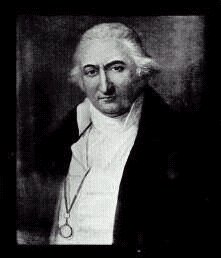Samuel Galton Jr. facts for kids
Samuel John Galton Jr. (born June 18, 1753 – died June 19, 1832) was an English businessman who made guns. He was born in Duddeston, Birmingham, England, into a Quaker family. Quakers are a religious group known for their peaceful beliefs. Samuel joined his father's company, which made guns. He became a member of the Lunar Society in December 1785. He lived at Great Barr Hall, which was one of the places where the Lunar Society met. He also built a house at Warley Woods and hired a famous landscape designer, Humphry Repton, to plan its gardens.
Samuel Galton's Family Life
Samuel Galton married Lucy Barclay (1757-1817). They had eight children together. Their first child was Mary Anne Galton (1778-1856). She grew up to be a writer who worked to end slavery. She married Lambert Schimmelpenninck in 1806.
Samuel's second child was Sophia Galton, who married Charles Brewin. His first son, Samuel Tertius Galton (1783-1844), also joined the Lunar Society. Samuel Tertius decided to close the family's gun-making business in 1815. He married Violetta Darwin in 1807. They had a son named Francis Galton (1822-1911), who became a famous scientist who studied human traits.
Samuel Galton had another son, Theodore Galton (1784-1810), but not much is known about him. His next child was Adele Galton (1784-1869), who married John Kaye Booth in 1827. Then came Hubert John Barclay Galton (1789-1864). Another child, Ewen Cameron Galton (1791-1800), sadly died at age 9. His last child was John Howard Galton, who married Isabelle Strutt. They had a son named Douglas Galton (1822-1899), who became one of the royal engineers.
Samuel Galton loved animals very much. He even owned many bloodhounds, which are a type of dog. He also loved birds. He wrote three books about birds, sharing his knowledge and passion.
Galton owned about 300 acres (121 hectares) of land at Westhay Moor, Somerset. He made this land usable by building a special waterway called Galton's Canal to drain it.
What Was the Lunar Society?
Samuel Galton joined the Lunar Society in December 1785. This was a group of important thinkers and scientists who met once a month around the time of the full moon. They discussed new ideas in science, industry, and the arts. Galton joined as a new member when Erasmus Darwin, another member, moved away. Samuel was one of 14 active members during the society's most important years. He was invited because he loved statistics and comparing different sets of information.
Galton also had a great interest in natural history. This was a subject taught in Quaker schools. Because he loved animals so much, he wrote many natural history books about them. His first set of books was called The Natural History of Birds: containing a variety of facts… for the amusement and instruction of children. This was a three-volume set. He wrote them to teach children, especially his own children, about birds. These books were some of the first natural history books written specifically for young readers.
Galton worked on another book for young people. In 1801, The Natural History of Quadrupeds; including all the Linnaean class of mammalia…For the instruction of young persons was published. A quadrupeds is an animal with four legs. Today, only one complete copy of this book exists in libraries around the world. It is kept at the Baldwin Library in the University of Florida.
During his time with the Lunar Society, Galton was known for being a careful experimenter. He was also seen as a very original thinker. One of his interesting experiments was about mixing colors. He wrote about this on August 1, 1799, in a magazine called Monthly Magazine. Galton was also interested in canals. He published a paper about them called On Canal Levels in 1817. He often put business reasons before scientific ones. Because of this, many of his scientific contributions are not widely known or published.
The Lunar Society and its members, including the Galton family, are remembered today. There are special stones called Lunar Society Moonstones in Birmingham. There is also a tall building in the center of the city named after them.
Galton's Gun Business
Samuel Galton faced criticism from the Quakers because he made guns. Quakers believe in peace and do not support war or violence. Galton defended his work by saying that Britain was often at war. He felt it was his duty as a citizen to help his country through its large industrial system.


